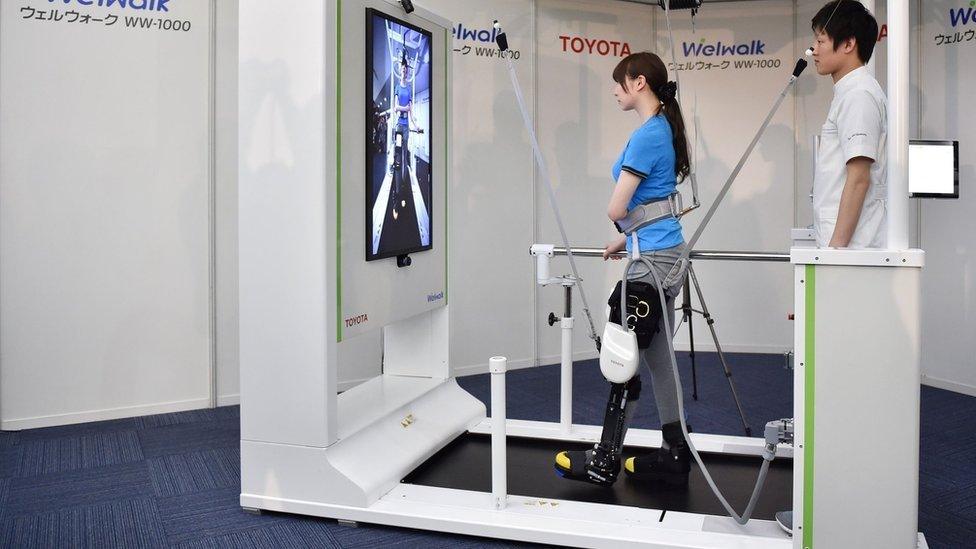Toyota develops robotic leg braces for older people
- Published

Toyota will be renting out robotic leg braces to 100 Japanese medical centres from autumn this year.
The Welwalk WW-1000 system is designed for people with severe mobility loss in one leg, such as stroke patients.
The motorised brace fits around the knee and lower leg, helping the wearer to bend and straighten the joint.
Experts say that being able to rent the equipment should make it more affordable for medical facilities than buying it outright.
The system will cost one million yen ($9,130; 拢7,298) up front, with a monthly fee of 350,000 yen ($3,195; 拢2,554).
Toyota has not released details of how much it would cost if it were available to buy rather than rent.
It was developed in conjunction with Fujita Health University Hospital.
Patients first learn to use the device by walking on a special treadmill that monitors their gait, with their weight supported from above by a harness.
'Just enough assistance'
One of Toyota's chief research officers, Toshiyuki Isobe, said this approach helped "to reduce the burden on the patient and allows them to engage in training for longer."
As users continue their rehabilitation, sensors in the brace monitor how they are walking, adjusting the amount of support it provides.
Dr Eiichi Saito, executive vice president of Fujita Health University, said the aim was to provide "just enough assistance", gradually reducing it so that patients learned to walk better on their own.
But as Dr Farshid Amirabdollahian, an expert in rehabilitation robotics and assistive technology at the University of Hertfordshire, explained, such technology is not new.
"A system called Lokomat, which works on both legs, has been adopted by the NHS," he said.
"There are similar systems in use in the Netherlands and the United States."
These walking assist systems provide support for both legs, as this can help train the user to balance their weight and movement.
"What is interesting here is the service model," he continued.
"Previously users of this technology were limited by how much they could afford: rehabilitation technology is quite expensive and many [hospitals] cannot afford it."
He said that Toyota's decision to allow facilities to rent the equipment meant more should be able to meet the initial costs and the monthly premiums.
Reducing the burden
Japan is the fastest-aging nation in the world.
In 2015 more than a quarter of the population was aged 65 or older, compared to the global average of 8.5%.
As the number of elderly people requiring care and assistance increases, the number of working-age people able to provide those services is decreasing.
That has prompted Japanese companies to develop mobility assistance devices aimed at improving the wellbeing and independence of the elderly and reducing the burden on their caregivers.
In 2015, Honda launched a rental service for .
Unlike Toyota's mobility aid, it fits around the wearer's waist and thighs and works to improve their stride.
- Published6 February 2017
- Published3 October 2016